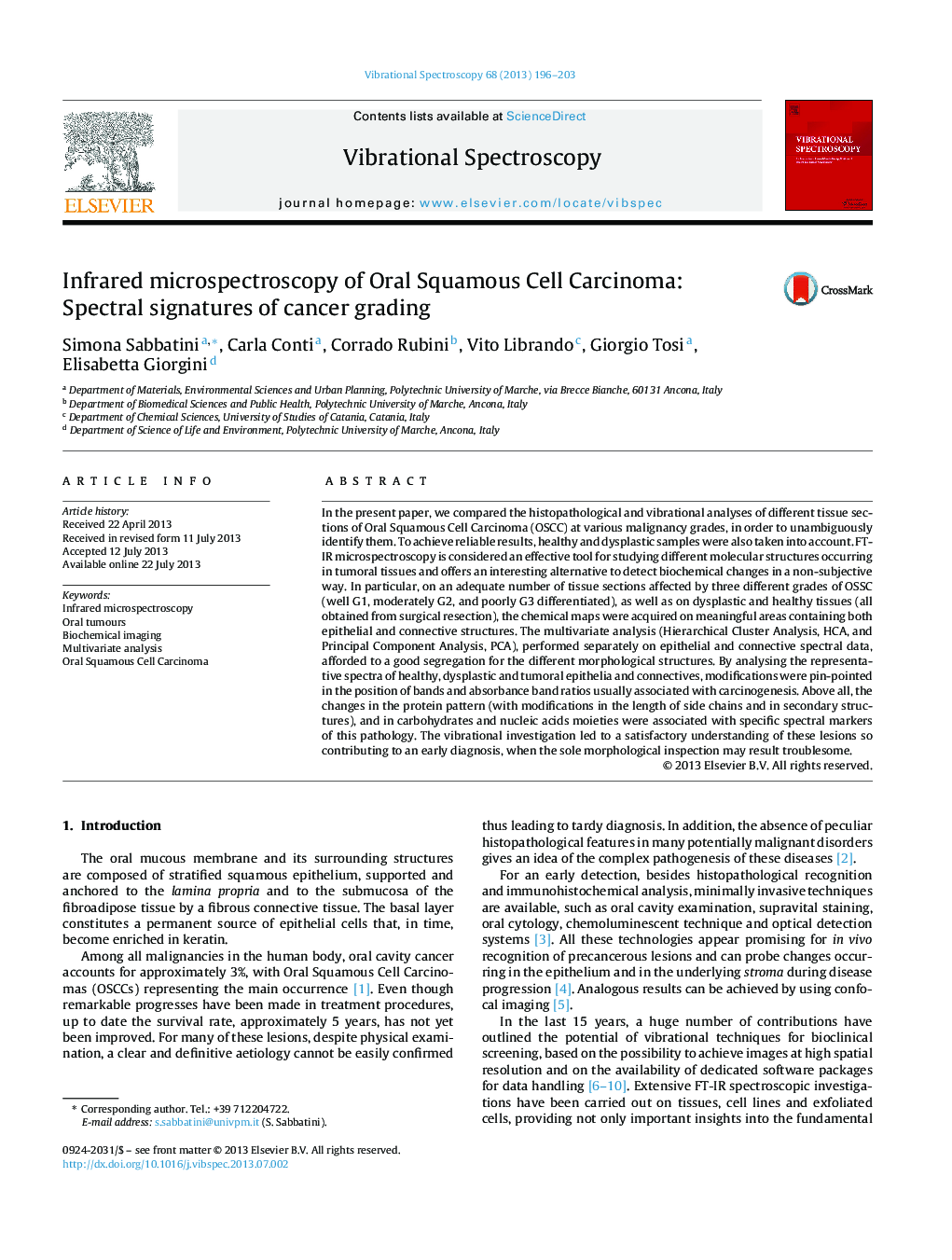| Article ID | Journal | Published Year | Pages | File Type |
|---|---|---|---|---|
| 1250183 | Vibrational Spectroscopy | 2013 | 8 Pages |
In the present paper, we compared the histopathological and vibrational analyses of different tissue sections of Oral Squamous Cell Carcinoma (OSCC) at various malignancy grades, in order to unambiguously identify them. To achieve reliable results, healthy and dysplastic samples were also taken into account. FT-IR microspectroscopy is considered an effective tool for studying different molecular structures occurring in tumoral tissues and offers an interesting alternative to detect biochemical changes in a non-subjective way. In particular, on an adequate number of tissue sections affected by three different grades of OSSC (well G1, moderately G2, and poorly G3 differentiated), as well as on dysplastic and healthy tissues (all obtained from surgical resection), the chemical maps were acquired on meaningful areas containing both epithelial and connective structures. The multivariate analysis (Hierarchical Cluster Analysis, HCA, and Principal Component Analysis, PCA), performed separately on epithelial and connective spectral data, afforded to a good segregation for the different morphological structures. By analysing the representative spectra of healthy, dysplastic and tumoral epithelia and connectives, modifications were pin-pointed in the position of bands and absorbance band ratios usually associated with carcinogenesis. Above all, the changes in the protein pattern (with modifications in the length of side chains and in secondary structures), and in carbohydrates and nucleic acids moieties were associated with specific spectral markers of this pathology. The vibrational investigation led to a satisfactory understanding of these lesions so contributing to an early diagnosis, when the sole morphological inspection may result troublesome.
